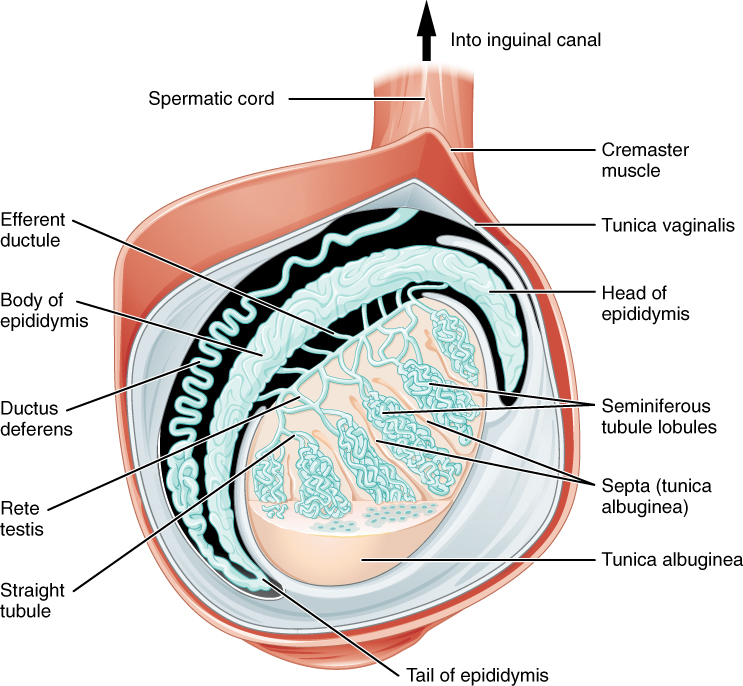22.2: Testes
- Page ID
- 59481
The testes (singular = testis) are the male gonads—that is, the male reproductive organs. They produce both sperm and androgens, such as testosterone, and are active throughout the reproductive lifespan of the male.
Paired ovals, the testes are each approximately 4 to 5 cm in length and are housed within the scrotum (see this figure). They are surrounded by two distinct layers of protective connective tissue (Figure \(\PageIndex{1}\): Anatomy of the Testis). The outer tunica vaginalis is a serous membrane that has both a parietal and a thin visceral layer. Beneath the tunica vaginalis is the tunica albuginea, a tough, white, dense connective tissue layer covering the testis itself. The tightly coiled seminiferous tubules form the bulk of each testis.

Figure \(\PageIndex{1}\): Anatomy of the Testis This sagittal view shows the seminiferous tubules, the site of sperm production. Formed sperm are transferred to the epididymis, where they mature. They leave the epididymis during an ejaculation via the ductus deferens. (CC-BY-4.0, OpenStax, Human Anatomy)


